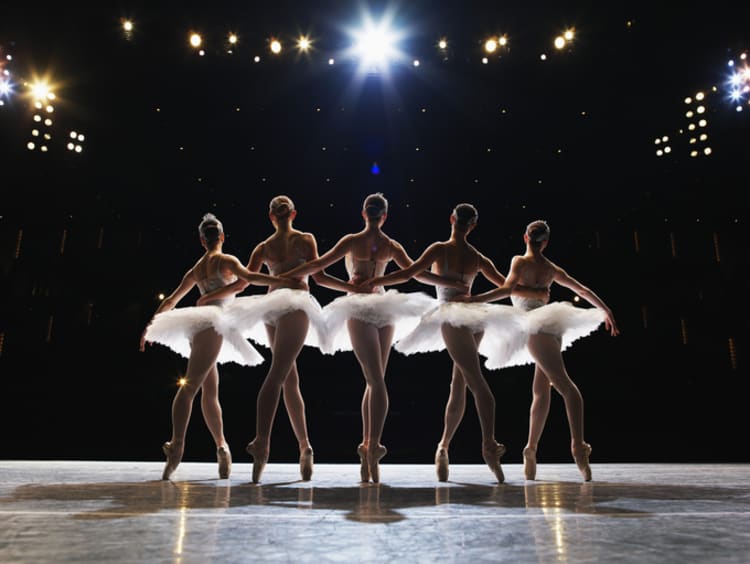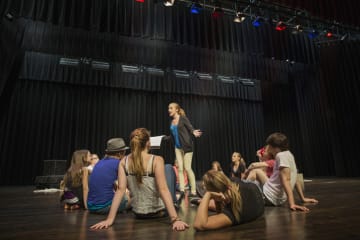Remakes of Classic Ballets: A Celebration of New Perspectives

Over the last few years, there has been a movement to look at some of the classic stories of ballet and reinterpret them to provide a new perspective. Ballet found its origins in the courtrooms of Italy and France, which influenced the approach of how stories are told. There has not always been as much diversity in the ballet world for dancers with different cultural backgrounds and perspectives. However, through the globalization of ballet, over the last few years, there has been a movement toward reinterpreting some of these classic ballets from new perspectives to reflect heritages and express contemporary values. This shift has created the ability for a celebration of diverse viewpoints and cultures.
Below are examples of famous ballets that have been changed to provide new perspectives and be more relatable to modern-day audiences. Some of these changes include reimagined settings, content and choreography.
Creole Giselle - Dance Theatre of Harlem
The “Creole Gisselle” by the Dance Theatre of Harlem is a remake of the classic tragic ballet story of Giselle, which follows the young maiden Giselle who loves to dance, but is betrayed by the one she loves and dies from that heartbreak, joining the Willies, a group of ghost women who died in a similar way. What is unique about this version is that it is the oldest remake on this list, premiering in 1984. Instead of being set in Austria, this version of the classic story of Giselle is set in 1840s Louisiana. While the choreography was kept within the traditional variations, the setting was changed to better relate to the cultural heritage of the dancers from the Dance Theatre of Harlem while maintaining the same time period. The costumes, setting and even the name of the male lead was changed to fit the new context of Louisiana. Yet, the main story the main story and theme of this classic ballet remains the same.
Ballet Russe Reimagined - Milwaukee Ballet
Diaghilev’s Ballet Russes was an influential ballet company which ran from 1909 through the 1960s under various names, creating well-known ballet pieces through artistic collaborations between choreographers, costume designers (such as Coco Channel), and composers (such as Igor Stravinsky and Claude Debussy). In February 2020, the Milwaukee ballet and the choreographers they partner with took some of these classic works such as “Firebird” and “Rite of Spring” and creating new choreography them to share with contemporary audiences while maintaining their timeless themes.
Romeo and Juliet – Suzhou Ballet Theatre
While the tragic Shakespeare love story and ballet of “Romeo and Juliet” is well-known, the Suzhou Ballet Theatre created a new take on it with its 2009 version. This ballet uses a unique perspective through combining Chinese heritage, European aesthetics of ballet and classical Chinese dance. This creates a unique viewing experience that merges and celebrates these cultural traditions in a new and innovative way.
Donald Byrd’s The Harlem Nutcracker
The story of Clara or Marie and the Nutcracker is a well-known holiday story about a girl who is attacked by a Mouse King on Christmas Eve, then is rescued by the Nutcracker and taken to the magical Land of Sweets. This innovative version of “The Nutcracker” takes on a very different approach than the traditional version, modifying both the score and traditional Petipa choreography. In the 1996 “Harlem Nutcracker,” Clara is not a young girl but a grandmother in Harlem with her grandchildren. This version of the classical ballet combines jazz, modern and ballet-style choreography to highlight the unique American setting and reinterprets the famous story for a new meaning such as the history of the civil rights movement and family bonds.
While these are a just few examples of the new perspectives being shared through ballet, these are great examples of a celebration of culture and heritage through ballet. Through the movements towards reinterpreting classic ballet stories, modern audiences are given a chance to see these timeless stories from a new perspective, relate to the characters or learn something new through these traditional ballets. Because of these innovations, the ballet world can continue to evolve with new ideas and authentic personal expressions through ballet and its classic stories.
The College of Fine Arts and Production at Grand Canyon University is a Bachelor of Arts in Dance. Graduates will emerge with marketable dance skills and an advanced sense of artistry and design. Begin exploring your pathway to success by clicking on Request Info above.
The views and opinions expressed in this article are those of the author’s and do not necessarily reflect the official policy or position of Grand Canyon University. Any sources cited were accurate as of the publish date.


